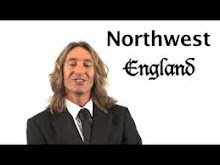On the corner of Russell Street and Little Collins street is a nondescript piece of luxury neo-modernism, containing yuppie apartments and a handful of high-class boutiques. This is nothing special of course, not in the teeming hub of economic rationalism that is the hypermodern metropolis. But what (literally) marks this structure apart, is that it sports a large barcode on its facade. It unashamedly embraces its architectural status as a mere commodity; not a benevolent server of a social function, not a monument of collective significance, nor a model of aesthetic wonder, merely means of accumulating capital. And why not? The (mis)guiding ethos of the age is Adam Smith's assertion that it is not the benevolence of the butcher that motivates him to provide us with meat, but his selfishness, and while this is the case why not be honest about it?

The building stands as the ultimate example of consumerist architecture in the city, not simply because it lays bare what other projects cloak in corporate speak, but because its chosen symbol, the barcode, is itself the ultimate avatar of free market capitalism.
As Michel Pastoureau illustrates in his brief but excellent book, "The Devil's Cloth: A History of Stripes & Striped Fabric", stripes in medieval times were viewed with extreme suspicion. The stripe, with its dynamic bichromism and implication of movement, was an aberration within feudalism both aesthetically and philosophically. The heraldic eye was trained to read images in terms of monochromatic layers (reflecting the feudal structure), to which the stripe was an aggressive assault. But this was not the only reason that the stripe was such an abomination. The medieval man was not a historical agent in the sense that we would understand, that is he did not conceive of himself as being a player in an ever-changing historical narrative. Rather he existed within a stable world, overseen by God and king, that always had been and always would be. The brash linearity of the stripe proved a disturbing and incongruous presence, and as such it was attached to those disturbing elements in the medieval world; Prostitutes, criminals, heretics, fools and the Devil himself all were branded with the stripe.

This stigma began to fade only with the rise of modernity. As the industrial revolution powered forward, taking with it an ascending bourgeoisie, so the stationary concept of history gave way to Utopian ideas of progress. A locomotive of Comtean dialectics steamed over the feudal model and into the future; suddenly the linearity of the stripe was in vogue.


The barcode thus serves as a branding of the historical narrative of laissez faire capitalism. And as Melbourne, like other Western cities, follows the Parisian model of purging the city of all undesirable (i.e. non bourgeois) elements, the barcoded building brazenly reaffirms that the city was/is the key unit in this march of consumerist triumph. It is where capitalism was born, and now that the industrial dirty work that was once done here can be passed on to lesser nations, it is where the oligarchs of late capitalism come to play. An arena of 21st century opulence.
This is underscored by the fact that the barcode on the building is not small, manageable and accessible, like that of a chocolate bar or soft drink, a product graspable by the plebs. It is large, imposing and overbearing. The masses cannot afford the product it represents, and it lets them know it. The barcode says to those who do not live in luxury apartments, "the city is the domain of capitalist power, it does not belong to you, it is ours." It stamps its ideological dialectic on the the urban sphere.
Of course, if a barcode is scratched or marked, it is rendered useless, no longer able to transmit the value of the item it appears on... see below.

2 comments:
Home prices in Melbourne are climbing but it is still possible to fulfill the great Australian dream of owning a “quarter acre home and garden”One of Australia’s if not the world’s most scenic drives is the Great Ocean Road from Geelong in the east to Nelson in the west view tranquil bays, pounding surf, huge cliffs, lush forests, towing rock formations and visit resort towns along the way.
Melbourne Removalists
This is a helpful post
Post a Comment